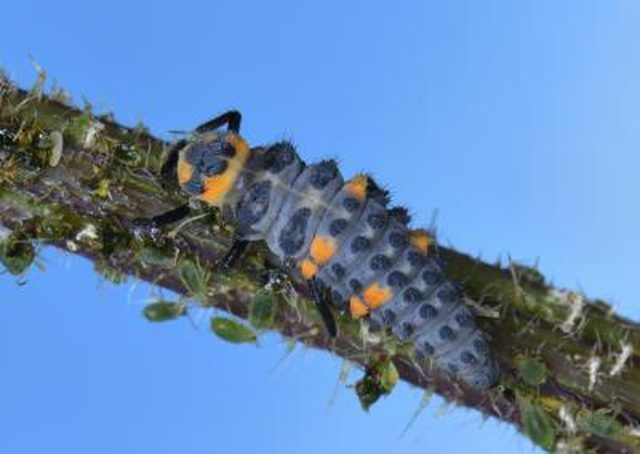Bulbs
Flower Basics
Flower Beds & Specialty Gardens
Flower Garden
Garden Furniture
Garden Gnomes
Garden Seeds
Garden Sheds
Garden Statues
Garden Tools & Supplies
Gardening Basics
Green & Organic
Groundcovers & Vines
Growing Annuals
Growing Basil
Growing Beans
Growing Berries
Growing Blueberries
Growing Cactus
Growing Corn
Growing Cotton
Growing Edibles
Growing Flowers
Growing Garlic
Growing Grapes
Growing Grass
Growing Herbs
Growing Jasmine
Growing Mint
Growing Mushrooms
Orchids
Growing Peanuts
Growing Perennials
Growing Plants
Growing Rosemary
Growing Roses
Growing Strawberries
Growing Sunflowers
Growing Thyme
Growing Tomatoes
Growing Tulips
Growing Vegetables
Herb Basics
Herb Garden
Indoor Growing
Landscaping Basics
Landscaping Patios
Landscaping Plants
Landscaping Shrubs
Landscaping Trees
Landscaping Walks & Pathways
Lawn Basics
Lawn Maintenance
Lawn Mowers
Lawn Ornaments
Lawn Planting
Lawn Tools
Outdoor Growing
Overall Landscape Planning
Pests, Weeds & Problems
Plant Basics
Rock Garden
Rose Garden
Shrubs
Soil
Specialty Gardens
Trees
Vegetable Garden
Yard Maintenance
How to Kill Black Bugs That Eat Tomato Plants
How to Kill Black Bugs That Eat Tomato Plants. If black bugs turn your tomato plants (Lycopersicon esculentum) into their one-stop buffets and nurseries, don't despair. [**Aphids**](http://www.ctahr.hawaii.edu/uhmg/FAQ/faq-aphid.asp) and [**potato flea beetles**](http://mtvernon.wsu.edu/path_team/tomato.htm#fleabeetle) are common on tomatoes,...

If black bugs turn your tomato plants (Lycopersicon esculentum) into their one-stop buffets and nurseries, don't despair. Aphids and potato flea beetles are common on tomatoes, especially during warm weather. Quick identification and elimination of the rapidly reproducing insects keeps the tomatoes at their best.
Recognizing the Intruders
Black, pear-shaped aphids feed in colonies along the stems and on the succulent new foliage* piercing the plants and draining sap with hollow, sharp mouth parts. Infested tomatoes have wilted, yellowing leaves coated with the insect's sticky waste. This honeydew attracts sugar-loving ants and sooty mold spores that germinate into patches of greasy, black fungus.
Potato flea beetles chew tiny, round holes the leaves, buds and blooms. They're most dangerous on seedling tomatoes. Using long hind legs that enable them to jump like fleas, they often move to tomatoes from nearby weeds.
The Ant Factor
Ants frequently target aphid-infested tomatoes and harvest honeydew by stroking the insects' abdomens to stimulate its release. They also herd aphids from overcrowded stems and leaves to uninfested, sap-rich ones. To protect the honeydew, they attack ladybugs, lacewings or Aphidius wasps that prey on the aphids.
Aphid control begins with ant elimination. Place enclosed, sugar-based boric-acid baits along the ant trails under the tomatoes. Foraging ants collect the bait and carry it to their nests, where the slowly acting boric acid wipes out the colonies over several days. Hide the mildly toxic baits under leaves where they won't tempt children or pets.
Natural Aphid Control
To remove an early aphid infestation, set the hose sprayer attachment on sharp spray or jet and rinse the tomatoes thoroughly, hitting the undersides of the leaves and all the stems. Rinsing early in the day lets the plants dry quickly, minimizing the chance of fungal infection.
After the ants are gone, entice aphid predators back by planting flat-faced, shallow-throated flowers near the tomatoes. The adults feed on their nectar and pollen.
Good choices are sweet alyssum (Lobularia maritima), which grows in U.S. Department of Agriculture plant hardiness zones 5 through 9, and annual cosmos (Cosmos spp.). Curb cosmos' reseeding habit by removing its old flowers before they set seed.
Chemical Aphid Control
Suffocate large aphid colonies with organic, ready-to-use insecticidal soap. After drying, it doesn't harm their predators. During calm, dry weather with no rain in the 24-hour forecast and a temperature below 90 degrees Fahrenheit, water the tomatoes well. Spray until the soap drips from all their surfaces. Repeat weekly, or as often as the manufacturer suggests, until the aphids are gone.
Dress in protective clothing, including a long-sleeved shirt, long pants, safety glasses, waterproof gloves and a respiratory mask and follow the label's instructions when working with any insecticide.
Flea Beetle Control
To discourage flea beetle attacks, maintain a weed-free zone around your tomatoes. Hoe regularly around the plants to destroy their soilborne eggs and larvae.
Plant-based pyrethrin insecticide kills the adult beetles on contact. When their leaves are dry and the temperature is below 90 F, spray the tomatoes until they drip. Dress in protective clothing and work in early morning or late evening, when bees aren't pollinating. Repeat every one or two weeks as needed to control the pests. Use pyrethrin as a last resort, because it also kills flea beetle predators.